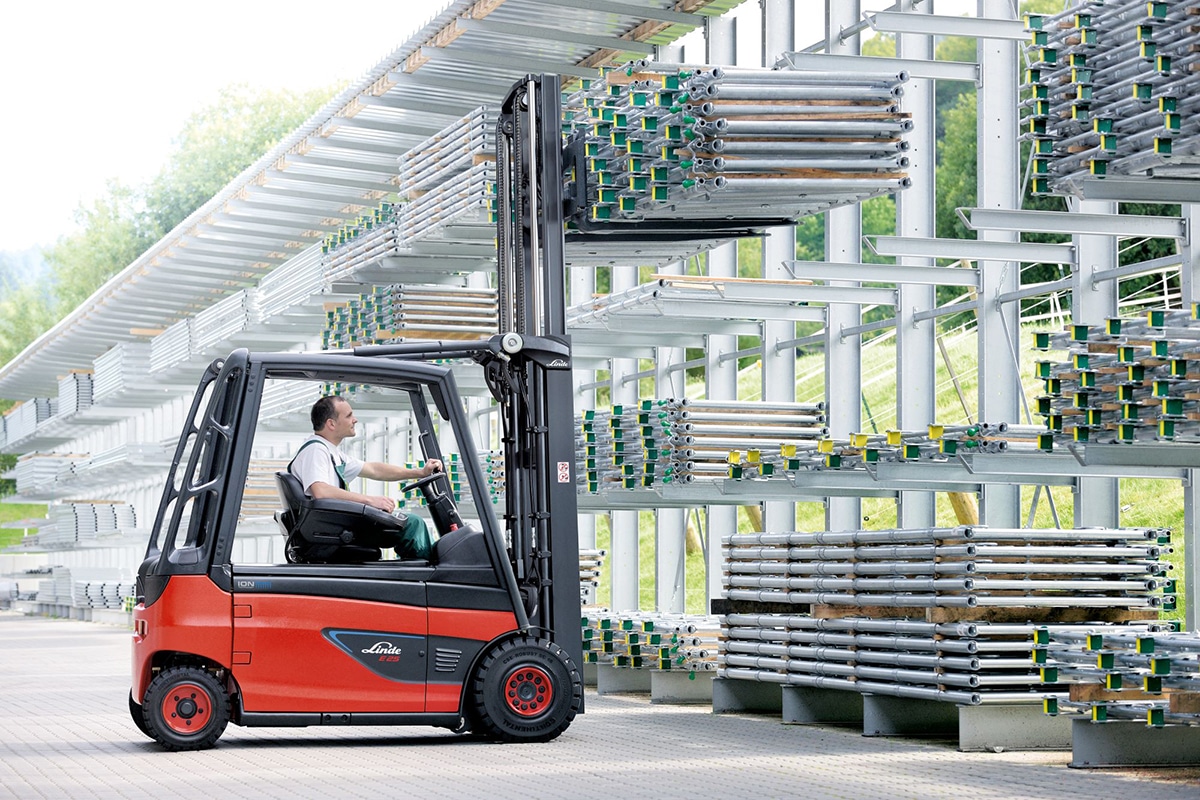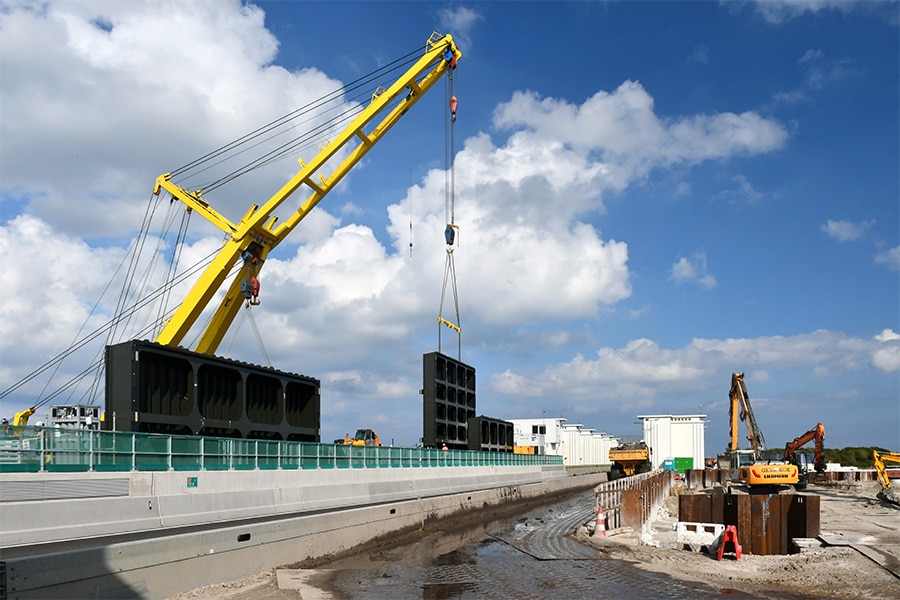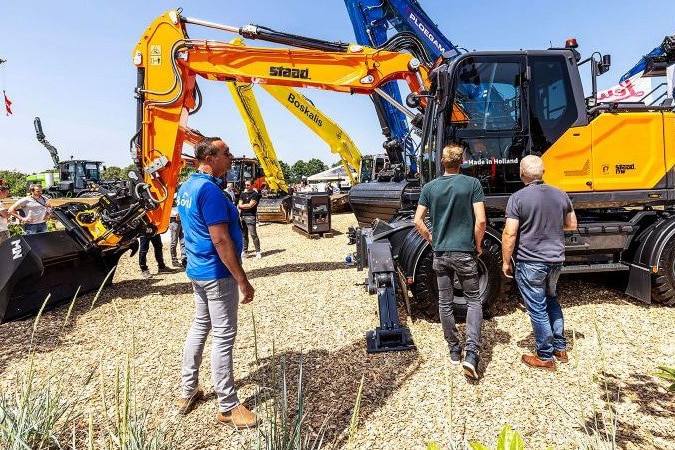
Tunnel maintenance vital for Amsterdam accessibility
Tunnels are complex parts of infrastructure. They are almost organisms, packed with technical installations, and they are also becoming increasingly complicated structurally, partly because safety requirements are becoming increasingly stringent. In fact, the Netherlands has the most stringent in all of Europe in its Tunnel Act. That's because an enormous amount of traffic passes through Dutch tunnels every day. Then you can miss tunnels that don't function properly like a toothache.
The 19 tunnels that are part of the National Highway System are under the jurisdiction of the Department of Public Works. Other tunnels are under the management of the provinces and municipalities that have them within their borders. Amsterdam is well endowed in this regard. The capital has the IJ Tunnel (1968), the Piet Hein Tunnel (1997), the Spaarndammertunnel (2018) and the Michiel de Ruijter Tunnel (2015), while the municipality also counts the underpass under the Arena (1996) as a tunnel. To keep these vital parts of Amsterdam's infrastructure safe and accessible, the municipality has an extensive program of major and daily maintenance.
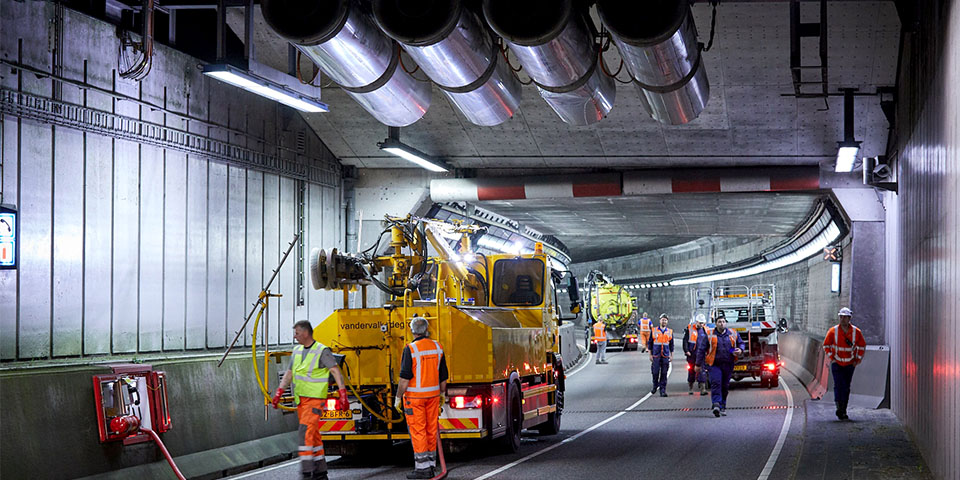
Cleaning crew in the northern entrance of the IJtunnel. (Photo: Municipality of Amsterdam/Vincent Basler)
Major maintenance
Jeroen Schrijver is asset manager for road tunnels at the City of Amsterdam: "In maintenance, a distinction is made between major maintenance and daily maintenance. Major maintenance is done on a project basis, with an integrated approach. All parts of the tunnel that need major maintenance or that need to be replaced are tackled as a package so that inconvenience is minimized. From the end of this year, for example, the Michiel de Ruijter Tunnel will be closed at night for six months to bring its fire resistance up to the legal level."
Daily maintenance
Daily maintenance takes place on a regular basis and is carried out by contractors. Schrijver: "We distinguish between tunnel-technical installations, which involve a lot of preventive and breakdown maintenance, and civil-technical components, which mainly involve corrective maintenance; for instance cleaning walls, sweeping carriageways, cleaning gullies and gutters. We see this explicitly as maintenance as well, because this activity contributes to tunnel safety and availability. Daily maintenance, insofar as noticeable to the public, is concentrated as much as possible in monthly night closures of the tunnel, which are publicized in various usual ways. The first Sunday of the month is on the calendar for City management, emergency services and public transportation night maintenance."
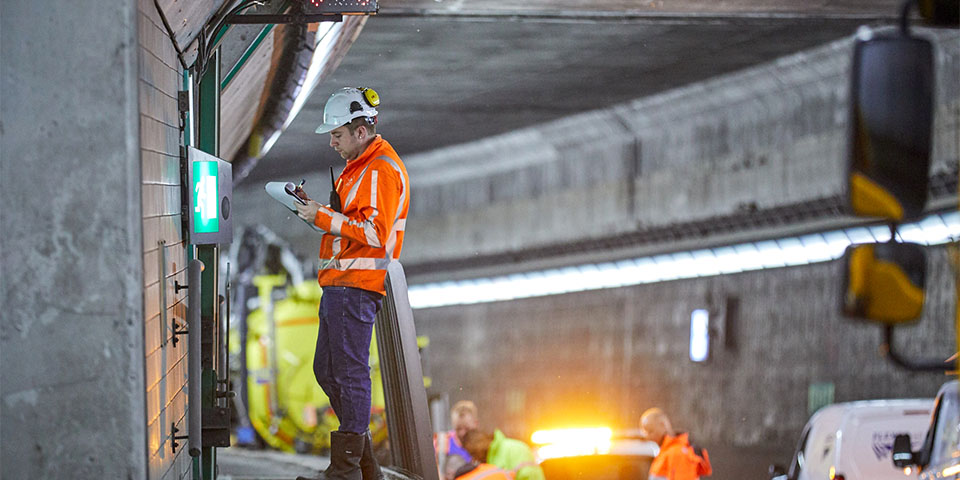
Inspection escape door IJtunnel. (Photo: Municipality of Amsterdam/Vincent Basler)
Testing, inspecting, measuring
Part of the daily maintenance is a set program also called preventive maintenance. Schrijver: "Per component operations are performed in advance, which include testing, inspecting and measuring. Cleaning is also for the most part planned. In addition, responding to unexpected issues, such as breakdowns and damages, is especially part of regular maintenance. If these affect tunnel operations and, for example, safety requirements are no longer met, they are resolved within short repair times. There are therefore fairly tight consignment agreements in the contracts. The systematics in maintenance are similar for all tunnels to date. However, we are in the process of introducing risk-based maintenance for the installations. This is now running in the IJ tunnel and will also be rolled out to the Michiel de Ruyter tunnel and the Spaarndammertunnel this year."
45 installations
What makes a tunnel so complex are the technical installations in particular. Schrijver: "The IJtunnel, for example, has 45 different installations. Most of them are hidden away in the service tunnel, some hang in the main tunnel, such as the camera systems, the intercom, lighting and sensors that detect air quality, smoke and traffic movements. To access them, the tunnel tube closes once every two months for testing. We call a camera circuit a non-sleeping installation; you can test it from the traffic control center. Ventilation is an example of a dormant installation that is generally not on. So you have to test that one to determine if it is still working."
The maintenance contracts for the technical installations have been outsourced to two contractors. AEVO takes care of the IJ Tunnel, the Michiel de Ruijter Tunnel, the Spaarndammertunnel and the Amsterdam Traffic Control Center; Dynniq is responsible for the Piet Hein Tunnel, the IJ streetcar tunnel and the Arena tunnel.
